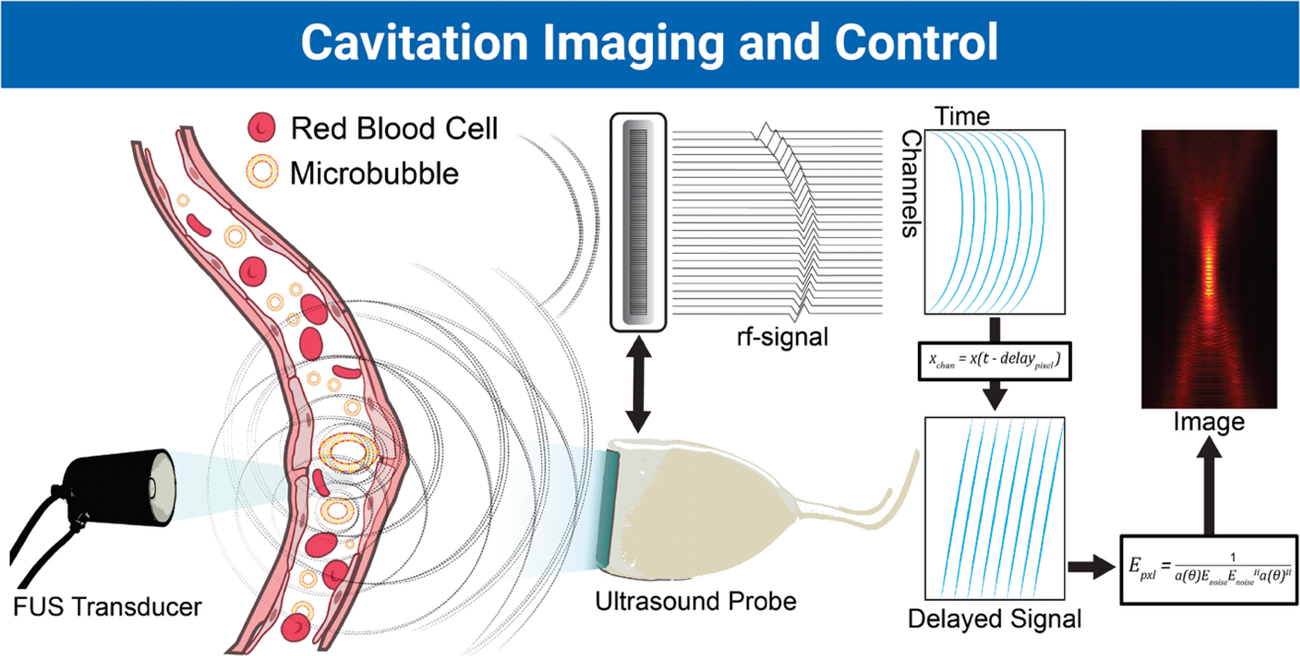PADAM: A New Passive Imaging Algorithm Enabling Safer, More Precise Control for Focused Ultrasound Therapy

BioE Assistant Professor Tao Sun and his team have developed Passive Acoustic Dynamic Differentiation and Mapping (PADAM), a breakthrough in passive cavitation imaging that provides sharper localization and real-time classification of bubble activity during focused ultrasound (FUS) therapies. This work, just published in IEEE Transactions on Biomedical Engineering, demonstrates how PADAM improves image resolution up to six-fold, reduces artifacts by 75%, and enables dynamic differentiation between stable and inertial cavitation—critical for safer, more effective ultrasound focal therapies that could potentially benefit patients with brain cancers, Alzheimer’s disease, and Parkinson’s disease.

Bubble cavitation emission signals are detected by an ultrasound imaging probe in passive listening mode and beamformed to generate cavitation images for guiding and controlling FUS therapeutic effects.
In Brief – Focused ultrasound (FUS) is currently the only method of reversible blood–brain barrier disruption for targeted drug delivery without incision or radiation. A significant challenge for its clinical translation is a lack of reliable real-time treatment control. Sun and his team have been working on imaging methods for cavitation control imaging methods for cavitation control; in this new work, they introduced PADAM, which significantly boosts the spatial resolution of passive cavitation imaging. Unlike previous methods that rely on empirically tuned thresholds, PADAM uses a physically grounded input parameter to distinguish stable versus inertial cavitation, facilitating real-time, physics-informed therapy monitoring.
Impact / Applications – This advancement brings the field closer to safe, real-time monitoring of focused ultrasound therapies—critical for precise drug delivery, neuromodulation, blood–brain barrier opening, and other emerging theranostic applications. Sun was previously featured by Research at Northeastern for his work using focused ultrasound to overcome barriers to brain drug delivery. The technology is the subject of a provisional patent (63/783,884) covering its novel bubble localization and classification capabilities for image-guided therapy.
This research builds on SUN Lab’s broader portfolio, which was recently strengthened by an NIH R35 Maximizing Investigators’ Research Award (MIRA) to develop ultrasound-controllable, multimodal imaging cellular probes and complementary ultrasound imaging technologies. Together, these complementary technical thrusts enhance the lab’s ability to design, visualize, and interpret the behavior of engineered cellular probes in vivo—directly supporting the goals of the R35 project.